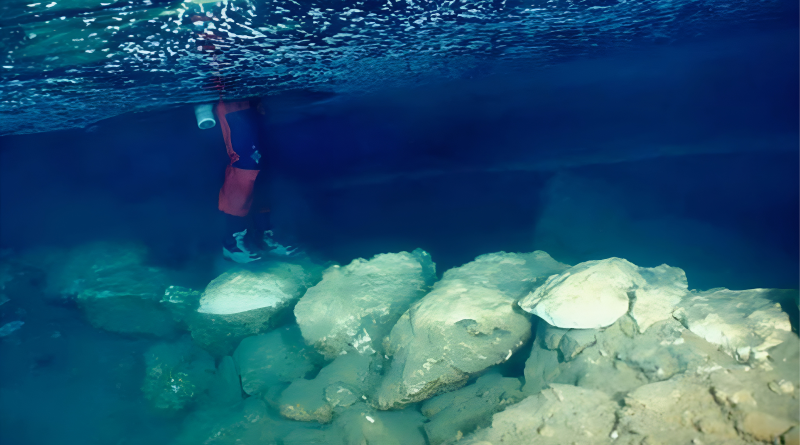Research confirms that the submerged bridge in Spanish Cave is around 6000 years old!
An ancient limestone bridge submerged in a Spanish cave has been discovered to be nearly 6,000 years old
An ancient limestone bridge submerged in a Spanish cave has been discovered to be nearly 6,000 years old, providing new evidence of early human presence on the island of Mallorca. The bridge, found in Genovesa Cave, was likely built to give a dry pathway across an underground lake, connecting the cave’s entrance to a chamber beyond. Researchers have long struggled to pinpoint the exact moment humans first colonized the Mediterranean islands, but this discovery narrows the gap between the eastern and western regions. The bridge’s construction methods remain unknown, but its existence suggests human presence on Mallorca occurred much earlier than previously believed. Initial studies estimated the bridge to be around 3,500 years old, but recent research suggests humans may have been present on the island as far back as 9,000 years ago.
The lack of well-preserved materials led to doubts about these early estimates. However, studying the rise of sea levels and analyzing mineral deposits on the submerged bridge allowed researchers to reconstruct historical sea levels and determine their age. The purpose of the cave and its bridge remains unclear, but researchers propose several theories, including a refuge, ritual site, or storage area. Further evidence of small stone homes and structures on Mallorca supports the idea that the cave bridge was a precursor to more sophisticated stone constructions found on the island. Palaeontologists continue to investigate why Mallorca was settled later than the eastern Mediterranean islands, citing its hot, dry climate and limited natural resources as possible deterrents.




